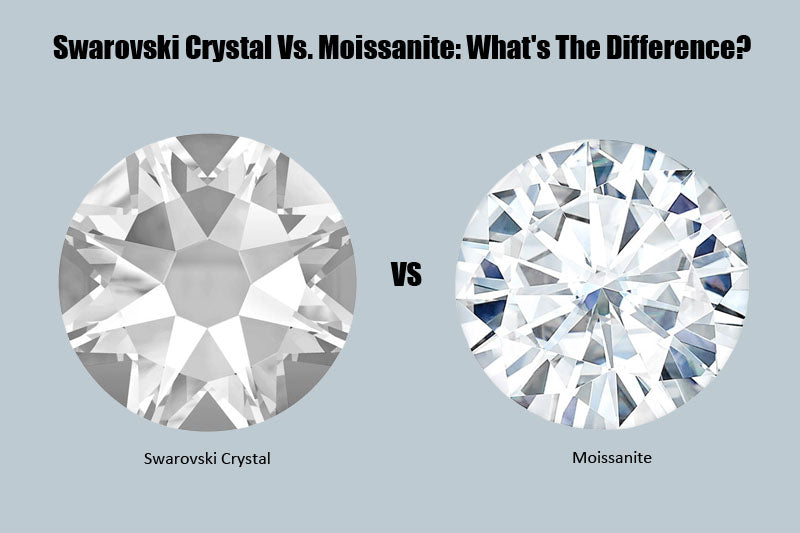Understanding the Differences Between Crystals and Diamonds

In the world of gemstones, crystals and diamonds are often admired for their beauty and brilliance. However, these materials are fundamentally different in composition, formation, and properties. This article clarifies whether diamonds are a type of crystal and explores the distinctions between the two, helping enthusiasts and potential buyers make informed decisions.
Introduction to Crystals and Diamonds
Crystals are solid materials whose atoms, ions, or molecules are arranged in an ordered pattern extending in all three spatial dimensions. This broad category includes a variety of minerals and synthetic materials, each with unique properties. Diamonds, on the other hand, are a specific type of crystal made entirely of carbon atoms arranged in a diamond lattice, which is known for its extreme hardness and high refractive index.
Are Diamonds Crystals?
Definition of a Crystal
- A crystal is defined by its microscopic structure of atoms arranged in a repeating pattern. This structure can include numerous types of minerals and synthetic materials.
Diamonds as a Subset of Crystals
- Diamonds are indeed a type of crystal. They are characterized by a specific crystalline structure where each carbon atom is tetrahedrally bonded to four other carbon atoms. This unique arrangement not only classifies diamonds as crystals but also contributes to their renowned properties such as hardness and clarity.
Key Differences Between General Crystals and Diamonds
Composition and Structure
- Crystals: Can be composed of various elements and compounds, forming numerous crystal systems (e.g., cubic, hexagonal, trigonal). Common crystals include quartz, salt, and even ice.
- Diamonds: Consist exclusively of carbon, with a cubic crystal structure that is highly symmetrical and tightly bonded.
Formation Process
- Crystals: Form through processes such as cooling from a liquid or gas state, or precipitating from a solution. Environmental conditions like temperature and pressure significantly influence their quality and type.
- Diamonds: Form under high-pressure, high-temperature conditions typically found deep within the Earth’s mantle. Carbon sources are subjected to these extreme conditions over billions of years, eventually transforming into diamonds.
Physical Properties
- Hardness: Diamonds are the hardest known natural material on the Mohs hardness scale, making them highly resistant to scratches. Other crystals vary widely in hardness.
- Refractive Index: Diamonds have a high refractive index, which gives them extraordinary brilliance and fire. This optical property is significantly higher in diamonds than in most other crystals.
- Thermal Conductivity: Diamonds exhibit exceptional thermal conductivity, making them effective heat conductors, unlike most other crystals.
Uses and Applications
- Crystals: Used widely in jewelry, decoration, and industrial applications, including electronic components due to their diverse properties.
- Diamonds: Primarily used in jewelry due to their aesthetic appeal and in industrial applications where durability is required, such as in cutting and drilling tools.
Market Value and Cultural Significance
Economic Value
- Crystals: Generally less expensive than diamonds, though some rare crystals can be highly valuable.
- Diamonds: Often command higher prices due to their rarity, desirability in jewelry, and industrial applications.
Cultural and Symbolic Meanings
- Crystals: Many cultures attribute healing properties and other metaphysical characteristics to various crystals.
- Diamonds: Commonly symbolize love and commitment, particularly in the form of engagement rings and wedding bands.
While diamonds are a type of crystal, they are distinguished by their unique properties, formation conditions, and applications. Understanding these differences is crucial for anyone interested in gemstones, whether for personal use, investment, or educational purposes. By appreciating both the general characteristics of crystals and the specific attributes of diamonds, one can better appreciate the diversity and beauty of these natural formations.
4 Comments
Leave A Comment
Harnessing Harmony: A Comprehensive Guide to Chakra Crystals and Their Healing Powers
Provide an overview of what chakras are—energy centers in the human body according to traditional Indian medicine. Explain the concept of using crystals to balance and enhance chakra energies. Understanding[...]












I found this article on the differences between crystals and diamonds extremely helpful and informative. The author has done a great job of breaking down the various properties and uses of crystals and diamonds and provided a clear and concise guide to summarize the information. From the unique characteristics of each gem to their specific uses, the guide is comprehensive and easy to understand. This comprehensive guide has given me a better understanding of crystals and diamonds, and I will definitely be referring back to it. Thank you for this insightful piece!
This article provides excellent insights on the differences between crystals and diamonds. Very informative and detailed!
The detailed explanation on crystal vs. diamond differences is really useful. Thanks for sharing!
This guide on the differences between crystals and diamonds is very informative and well-structured. Appreciate the effort!